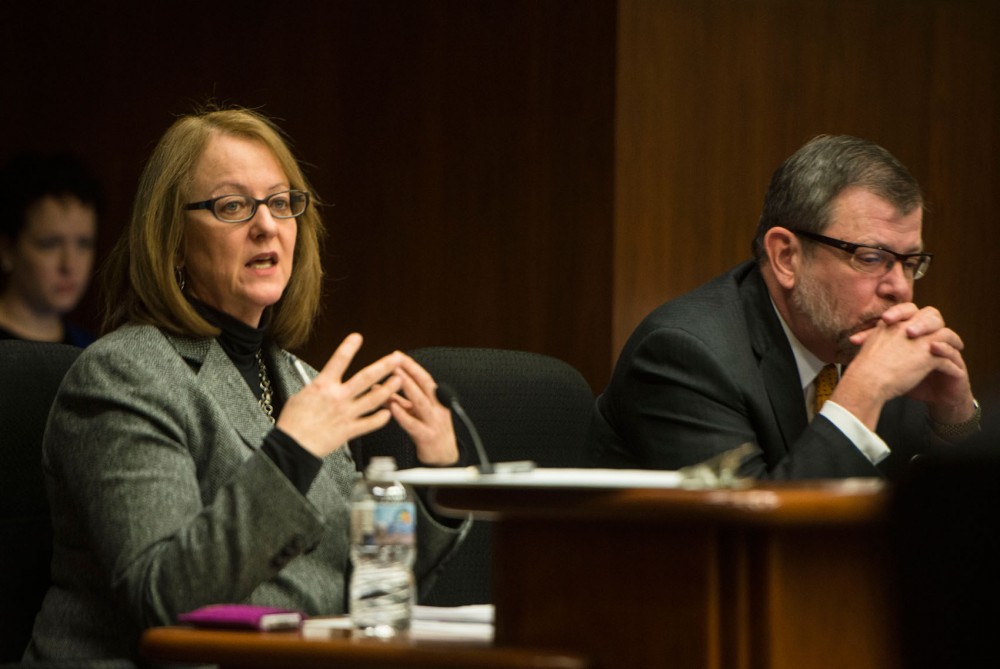At a Minnesota House committee hearing Monday, state Representatives probed University of Minnesota officials about how the institution would change its budget if its request for state funding isn’t fully met.
University officials outlined the 2014 capital budget request for the first time this legislative session in front of the House’s higher education committee, chaired by Rep. Gene Pelowski, DFL-Winona.
Legislators asked how the University would divide its funding, especially for Higher Education Asset Preservation and Replacement, if the state’s recommendation doesn’t align with the request.
The University is asking for $233 million for construction and renovation projects across its system. Both the House and the Senate will discuss the request until a final bill passes before the session ends in May.
University President Eric Kaler said the bonding request will affect the institution’s operating budget, which includes tuition, but the exact effects are unclear. The University is required to fund one-third of the total cost of construction projects.
“The University does need to look at all of its sources of revenue that it has, including tuition to help pay for that,” Kaler said to the representatives.
If the Legislature approves the full request, the operating budget would be looked at to adjust for about $3 million in debt service impact. University Chief Financial Officer Richard Pfutzenreuter said that would translate into a 1 percent tuition increase, not necessarily for undergraduate tuition.
“I’m not sure that we can give you a precise number, but there will be an impact,” Kaler said.
Last legislative session, the University successfully lobbied for state funds to freeze tuition for in-state undergraduates this school year. Pelowski voiced concern at the meeting about whether the full state funding appropriation the University got in exchange for the tuition freeze is being used appropriately.
“Mr. Pfutzenreuter, it was the University that began the discussion of freezing tuition on the undergraduate level, and one that the Legislature and the governor took extremely seriously,” Pelowski said.
Gov. Mark Dayton released his bonding proposal in January, setting aside $56.7 million to renovate the Tate Laboratory of Physics, $12 million for the University’s research laboratory improvement fund and $10 million to renovate the Wellness Center on the Crookston campus. In his recommendation, he included only three of the six projects the University requested funding for.
The proposal also set aside $40 million for the HEAPR request — 60 percent short of the University’s request. University Services Vice President Pam Wheelock said the University would have to reanalyze how it plans to distribute the funds based on Dayton’s recommendation.
Wheelock said at the meeting that the University plans to work with legislators as the session continues to make their case for the full request.
“I think our hope is that the state will continue to be a good partner,” she said, “not only to build new buildings, but to take good care of the investment that’s already been made in existing ones.”








